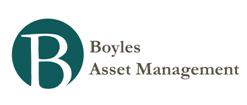Hussman Weekly Market Comment: "Do I Feel Lucky?"
As of last week, the market continued to reflect a set of conditions that have characterized a wicked subset of historical instances, comprising a Who's Who of Awful Times to Invest . Over the weekend, Randall Forsyth of Barron's ran a nice piece that reviewed our case (the chart in Barrons has a problem with the date axis, but the original chart is in last week's comment Warning: A New Who's Who of Awful Times to Invest). It's interesting to me that among the predictable objections to that piece by bullish readers (mostly related to our flat post-2009 performance, but overlooking the 2000-2009 record), none addressed the simple fact that the prior instances of this syndrome invariably turned out badly. It seems to me that before entirely disregarding evidence that is as rare as it is ominous, you have to ask yourself one question. Do I feel lucky?
From our perspective, accepting stock market risk is not presently a venture that is priced to achieve reasonable investment returns (we estimate a likely 4.3% annual total return for the S&P 500 over the coming decade, and a great deal of volatility in achieving that return). Nor is market risk attractive on a speculative basis, given present overbought conditions, overbullish sentiment, and growing set of hostile syndromes (what we call Aunt Minnies) that have historically been associated with negative return/risk tradeoffs. Then again, what keeps slot machines spinning all around the world is the hope - despite the predictably and reliably negative average return/risk tradeoff - that this time will be different, and this spin will work out. So you have to ask yourself one question. Do I feel lucky?
Investors Intelligence notes that corporate insiders are now selling shares at levels associated with "near panic action." Since corporate insiders typically receive stock as part of their compensation, it is normal for insiders to sell about 2 shares on the open market for every share they purchase outright. Recently, however, insider sales have been running at a pace of more than 8-to-1. The dollar amounts are even more lopsided, as Trim Tabs reports a recent pace of $13 of insider sales for every $1 of purchases. Indeed, some of the weekly spikes have been to levels that are associated almost exclusively with intermediate market peaks, the most recent being the run-up to the 2007 market peak, the early 2010 peak, and the 2011 peak, all of which resulted in significant intermediate corrections or worse. Of course, it's sometimes the case that insiders are early, and therefore miss part of the tail of a market advance. So it might be worth ignoring the heavy pace of insider selling for a little while. But you have to ask yourself one question. Do I feel lucky?
- Hussman Weekly Market Comment: We Learn From History That We Do Not Learn From History
Link to: We Learn From History That We Do Not Learn From History “We learn from history that we do not learn from history.” Georg Wilhelm Friedrich Hegel Last week, Investors Intelligence reported that bullish sentiment surged...
- Hussman Weekly Market Comment: The Diva Is Already Singing
Regardless of last week’s slight tapering of the Federal Reserve’s policy of quantitative easing, speculators appear intent on completing the same bubble pattern that has attended a score of previous financial bubbles in equity markets, commodities,...
- Hussman Weekly Market Comment: Low-water Mark
As of Friday, our estimates of prospective return/risk for the S&P 500 have dropped to the single lowest point we’ve observed in a century of data. There is no way to view this as something other than a warning, but it’s also a warning that I...
- Hussman Weekly Market Comment: Dancing At The Edge Of A Cliff
Present market risks involve a confluence of factors. First, valuations remain unusually rich. Though prospective returns are better than at the 2000 and 2007 peaks, valuations remain more elevated than at any point prior to the late-1990's bubble,...
- Hussman Weekly Market Comment: Warning: Goat Rodeo
Goat Rodeo - Appalachian slang for a chaotic, high-risk, or unmanageable scenario requiring countless things to go right in order to walk away unharmed. Over the years, of the most frequent phrases in these weekly comments has been "on average." Most...

